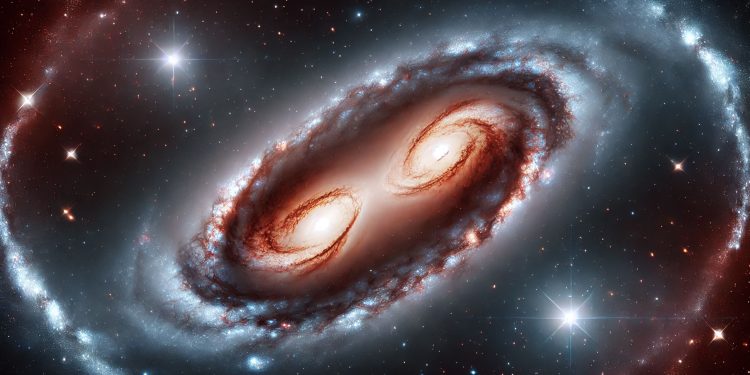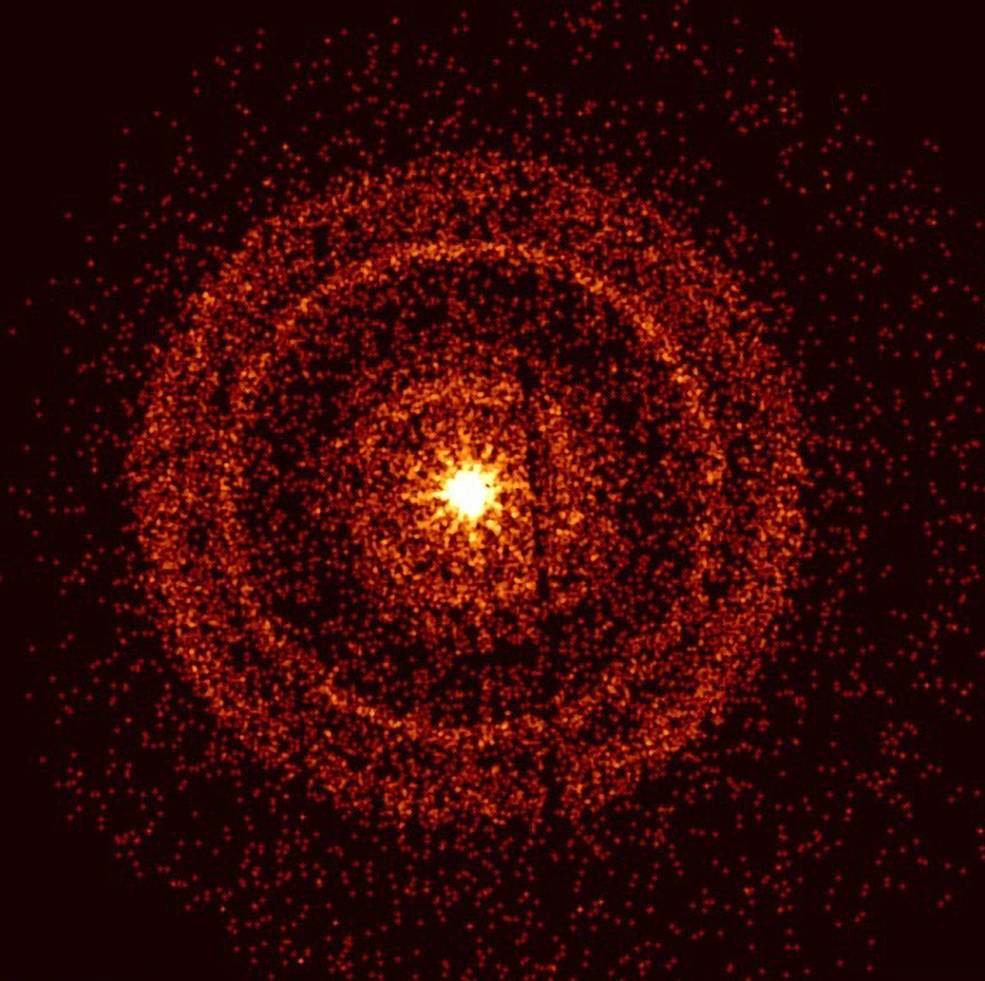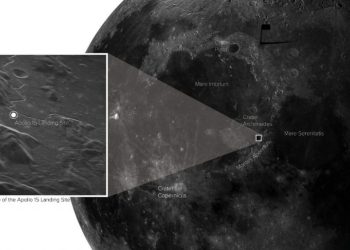Astronomers have uncovered an extraordinary celestial event—a rare double-gravitational lens caused by the perfect alignment of two galaxies. This discovery, published on the arXiv preprint archive, showcases how the combined gravitational forces of these galaxies bend light in a way never seen before, offering a unique opportunity to study the universe’s secrets.
When massive objects like galaxies align, their gravity can act as a lens, magnifying and distorting light from distant sources behind them. This phenomenon, known as gravitational lensing, is a stunning confirmation of Einstein’s theory of general relativity. But this new discovery takes it to another level: two galaxies working in unison as a compound gravitational lens, bending light into a complex zig-zag path. Researchers describe this configuration as “extremely rare,” where light from a distant quasar is deflected in opposite directions by each galaxy.
Initially, astronomers believed the system, named J1721+8842, consisted of a single elliptical galaxy bending light from a quasar behind it. However, after analyzing two years of data, they noticed duplicated light spots that hinted at a second lensing galaxy. Using observations from the James Webb Space Telescope, they confirmed that the reddish ring, initially thought to be an Einstein ring, was actually caused by the second galaxy. Advanced computer models solidified the finding, revealing this remarkable double-lensing system.

This unique setup opens up new avenues for research, particularly in refining the Hubble constant, a value crucial to understanding the universe’s expansion rate. By combining time-delay cosmography, which measures the delay in light paths, with dual source-plane lensing techniques, researchers can gain unprecedented insights into cosmic distances and dark energy.
While the team anticipates these calculations will take over a year to complete, the implications are monumental. As cosmologist Thomas Collett from the University of Portsmouth explained, “The true value of these lensed quasars lies in their ability to test whether the expansion rate of the universe aligns with the cosmological model.”
This discovery not only showcases the beauty of gravitational lensing but also underscores the complexity and interconnectedness of the cosmos, offering a glimpse into the intricate dance of light, gravity, and matter on a universal scale.











